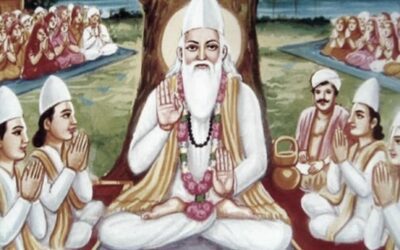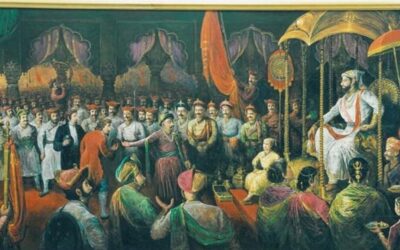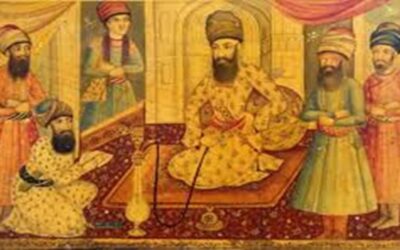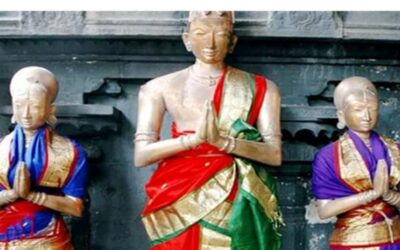Our Blogs
Meaning and Importance of Political Theory
Political theory is the cornerstone of political science, providing the analytical and philosophical foundation for understanding government, power, and societal organization. By delving into the fundamentals of how societies structure themselves and the principles guiding governance, political theory shapes our comprehension of the political world.
Life & Teachings of Kabeer
Kabir’s birth is wrapped in mystery, with many legends surrounding his origins. Historical records suggest he was born in 1440 A.D. in Benares (now Varanasi). One legend recounts that his widowed Brahmin mother, fearing societal dishonor, abandoned him near a tank in the holy city. Miraculously, the infant survived, nourished by honey droplets falling from a nearby tree.
The Carnatic Wars: A Defining Chapter in India’s Colonial History
The Carnatic Wars were a series of military conflicts in the 18th century fought in the Carnatic region, a dependency of the Hyderabad State in India. These wars not only shaped the colonial trajectory of India but also marked the decline of French ambitions and the rise of British dominance on the subcontinent. Here’s a deep dive into the events, causes, and outcomes of these pivotal conflicts.
Shivaji and his Administration
Shivaji Maharaj, a visionary leader and founder of the Maratha Empire, was renowned for his effective governance, military strategy, and administrative reforms. Rising as a strong warrior who challenged Mughal dominance and other adversaries like Afzal Khan and Aurangzeb, Shivaji established an empire characterized by an efficient and disciplined administration.
Religious Policy of Akbar
Akbar, one of India’s greatest rulers, was known for his broadmindedness and visionary outlook. From his early years, he was influenced by liberal thinkers, such as his regent Bairam Khan, a Shia liberal Muslim. Akbar’s exposure to diverse scholars, religious ideologies, and his own innate curiosity led him to envision a synthesis of all religions. His revolutionary idea culminated in the founding of Din-i-Ilahi in 1582, a religion that sought to combine the best aspects of all faiths. Importantly, Akbar never imposed his beliefs on his subjects, reflecting his unparalleled tolerance and respect for diversity.
Cultural Contributions of Rajputs
The Rajputs were not just warriors and rulers; they were connoisseurs of art and architecture. Their contributions to India’s cultural heritage are remarkable, with their architecture reflecting a blend of indigenous traditions and external influences, primarily Mughal and Islamic styles. This synthesis resulted in a distinctive architectural style that remains unparalleled in its beauty and ingenuity.
Life and Achievements of Krishnadevaraya
The reign of Sri Krishnadevaraya, marked by unparalleled achievements, stands as a crowning era in the history of the Vijayanagar Empire. Known as Kannada Rajya Rama Ramana , Moorurayaraganda , and Andhra Bhoja , his legacy remains a beacon of prosperity, military prowess and cultural renaissance.
Art and Architecture of the Delhi Sultanate Era
The Delhi Sultanate period (13th–16th century) stands as one of the most fascinating epochs in the history of Indian architecture. This era marked a transformation in India’s architectural landscape, blending Islamic styles with indigenous Indian elements. In this blog, we’ll delve into the architectural masterpieces of the Delhi Sultanate, explore its distinctive features, and understand its cultural significance.
ಕೂಲಿಯ ದರಗಳಲ್ಲಿ ವ್ಯತ್ಯಾಸಗಳಿರಲು ಕಾರಣಗಳು
ವೇತನದ ದರಗಳು ವಿವಿಧ ಪ್ರದೇಶಗಳು, ಉದ್ಯೋಗಗಳು, ಮತ್ತು ಕಾಲಾವಧಿಗಳಲ್ಲಿ ಸಮಾನವಾಗುವುದಿಲ್ಲ. ಒಂದೇ ಪ್ರದೇಶದಲ್ಲೂ, ವಿವಿಧ ವೃತ್ತಿಗಳನ್ನು ಅವಲಂಬಿಸಿ ವೇತನದ ವ್ಯತ್ಯಾಸಗಳಿರುತ್ತದೆ. ಈ ವ್ಯತ್ಯಾಸಗಳಿಗೆ ಹಲವು ಕಾರಣಗಳಿವೆ, ಅವು ಕಾರ್ಯದ ಸ್ವರೂಪ, ಪ್ರದೇಶದ ವಿಶೇಷತೆಗಳು, ಮತ್ತು ಆರ್ಥಿಕ ಪರಿಸ್ಥಿತಿಗಳ ಪ್ರಕಾರ ಬದಲಾಗುತ್ತವೆ. ಈ ಪ್ರಮುಖ ಕಾರಣಗಳನ್ನು ಇಲ್ಲಿ ವಿವರಿಸಲಾಗಿದೆ.
ಬೆಲೆ ನಿರ್ಣಯದಲ್ಲಿ ಕಾಲದ ಪಾತ್ರ
ಪ್ರಸಿದ್ಧ ಅರ್ಥಶಾಸ್ತ್ರಜ್ಞ ಅಲ್ಫ್ರೆಡ್ ಮಾರ್ಷಲ್ ಬೆಲೆ ನಿರ್ಣಯದಲ್ಲಿ ಕಾಲದ ಮಹತ್ವವನ್ನು ಒತ್ತಿಹೇಳಿದ್ದಾರೆ. ಅವರು ಬೇಡಿಕೆ ಮತ್ತು ಪೂರೈಕೆ ಶಕ್ತಿಗಳು ಸಮತೋಲನ ಬೆಲೆ ಸ್ಥಾಪಿಸಲು ಪರಸ್ಪರ ಕ್ರಿಯೆ ಮಾಡುವ “ಕಾಲಾವಧಿಗಳನ್ನು” ಪರಿಚಯಿಸಿದರು. ಯಾವ ಸಮಯವನ್ನು ಪರಿಗಣಿಸಬೇಕು ಎಂಬುದರ ಮೇಲೆ ಬೇಡಿಕೆ ಅಥವಾ ಪೂರೈಕೆ ಬೆಲೆ ನಿರ್ಣಯದಲ್ಲಿ ಹೆಚ್ಚು ಪ್ರಭಾವ ಬೀರುತ್ತವೆ.
ಉತ್ಪಾದನಾಂಗಗಳು
ಉತ್ಪಾದನಾ ಪ್ರಕ್ರಿಯೆಯು ಆರ್ಥಿಕ ಚಟುವಟಿಕೆಯ ಮೂಲಾಧಾರವಾಗಿದೆ, ಆರ್ಥಿಕ ಚಟುವಟಿಕೆಯ ಸ್ತಂಭಗಳ ಉತ್ಪಾದನಾಂಗಗಳೆಂದು ಎಂದು ಕರೆಯಲ್ಪಡುವ ಪ್ರಮುಖ ಅಂಶಗಳಿಂದ ನಡೆಸಲ್ಪಡುತ್ತದೆ ಈ ಅಂಶಗಳು ಸರಕು ಮತ್ತು ಸೇವೆಗಳ ರಚನೆಯಲ್ಲಿ ಅನಿವಾರ್ಯವಾಗಿವೆ. ಸಾಂಪ್ರದಾಯಿಕವಾಗಿ ಭೂಮಿ, ಕಾರ್ಮಿಕ, ಬಂಡವಾಳ ಮತ್ತು ಸಂಸ್ಥೆ ಎಂದು ವರ್ಗೀಕರಿಸಲಾಗಿದೆ, ಅವರು ಯಾವುದೇ ಉತ್ಪಾದನಾ ವ್ಯವಸ್ಥೆಯಲ್ಲಿ ಪ್ರಮುಖ ಪಾತ್ರವನ್ನು ವಹಿಸುತ್ತಾರೆ.
ಬೇಡಿಕೆಯನ್ನು ನಿರ್ಧರಿಸುವ ಅಂಶಗಳು
ಬೇಡಿಕೆಯು ಅಭಿರುಚಿಗಳು, ಅನುಭೋಗಿಗಳ ಆದಾಯ, ವಸ್ತುವಿನ ಬೆಲೆ, ಹವಾಮಾನ, ಜನಸಂಖ್ಯೆಯ ಗಾತ್ರ, ಸಂಪತ್ತಿನ ವಿತರಣೆ, ಉಳಿತಾಯದ ಪ್ರವೃತ್ತಿ, ಉದ್ಯಮದ ಸ್ಥಿತಿಗತಿ, ನಿರೀಕ್ಷಣೆಗಳು, ಹಣದ ಸರಭರಾಜು, ಪೂರಕ ವಸ್ತುಗಳು ಮುಂತಾದ ಅಂಶಗಳಿಂದ ನಿರ್ಧರಿತವಾಗುತ್ತದೆ.
ತುಷ್ಟಿಗುಣ ಮತ್ತು ಅದರ ಲಕ್ಷಣಗಳು.
ಮಾನವನ ಬಯಕೆಗಳನ್ನು ತೃಪ್ತಿಪಡಿಸುವ ವಸ್ತುವಿನ ಗುಣವನ್ನು ತುಷ್ಟಿಗುಣ ಎನ್ನಲಾಗುವುದು. ಎಲ್ಲಾ ಆರ್ಥಿಕ ಮತ್ತು ಆರ್ಥೀಕೇತರ ವಸ್ತುಗಳು ತುಷ್ಟಿಗುಣವನ್ನು ಹೊಂದಿರುತ್ತದೆ. ಯಾವುದೇ ವಸ್ತು ಅದು ಮಾನವನಿಗೆ ಉಪಕಾರಿಯಾಗಿರಬಹುದು ಅಥವಾ ಹಾನಿಕಾರಕವಾಗಿರಬಹುದು. ಮಾನವನ ಬಯಕೆಯನ್ನು ತೃಪ್ತಿಪಡಿಸುವ ಗುಣ ಹೊಂದಿದ್ದರೆ ಅದು “ತುಪ್ಪಿಗುಣ ಹೊಂದಿದೆ” ಎಂದು ಹೇಳಬಹುದು.
ಯೋಗಕ್ಷೇಮ ವ್ಯಾಖ್ಯಾನ
ಅಲ್ಫ್ರೆಡ್ ಮಾರ್ಷಲ್, ಎ.ಸಿ.ಪಿಗು, ಎಡ್ರಿನ್ ಕ್ಯಾನನ್, ಬೆವರಿಜ್ ಮುಂತಾದ ಅರ್ಥಶಾಸ್ತ್ರಜ್ಞರು ಈ ಯೋಗಕ್ಷೇಮ ವ್ಯಾಖ್ಯಾನದ ಪ್ರತಿಪಾದಕರಾಗಿದ್ದಾರೆ. ಈ ಎಲ್ಲಾ ಅರ್ಥಶಾಸ್ತ್ರಜ್ಞರು ನವ ಸಂಪ್ರದಾಯ ಪಂಥಕ್ಕೆ ಸೇರಿದವರಾಗಿರುವುದರಿಂದ ಈ ವ್ಯಾಖ್ಯೆಯನ್ನು ‘ನವ ಸಂಪ್ರದಾಯ ಪಂಥದ ವ್ಯಾಖ್ಯೆ” ಎಂದೂ ಕರೆಯಲಾಗಿದೆ. ಮಾರ್ಷಲ್ ಮತ್ತು ಅವರ ಅನುಯಾಯಿಗಳು ಸಂಪತ್ತಿಗಿಂತಲೂ ಮಾನವನ ಯೋಗಕ್ಷೇಮಕ್ಕೆ ಹೆಚ್ಚು ಪ್ರಾಮುಖ್ಯತೆ ನೀಡಿದುದರಿಂದ ಈ ವ್ಯಾಖ್ಯಾನವನ್ನು “ಯೋಗಕ್ಷೇಮ ವ್ಯಾಖ್ಯೆ” ಎಂದು ಕರೆಯಲಾಗಿದೆ.
Understanding Wage Rate Differences
Wage rates are far from uniform across different regions, occupations, and time periods. Even within the same region, wage disparities exist between various professions. The reasons for these differences are multifaceted and rooted in the nature of work, regional factors, and changing economic conditions. Let’s delve into the key factors influencing wage rate variations.










